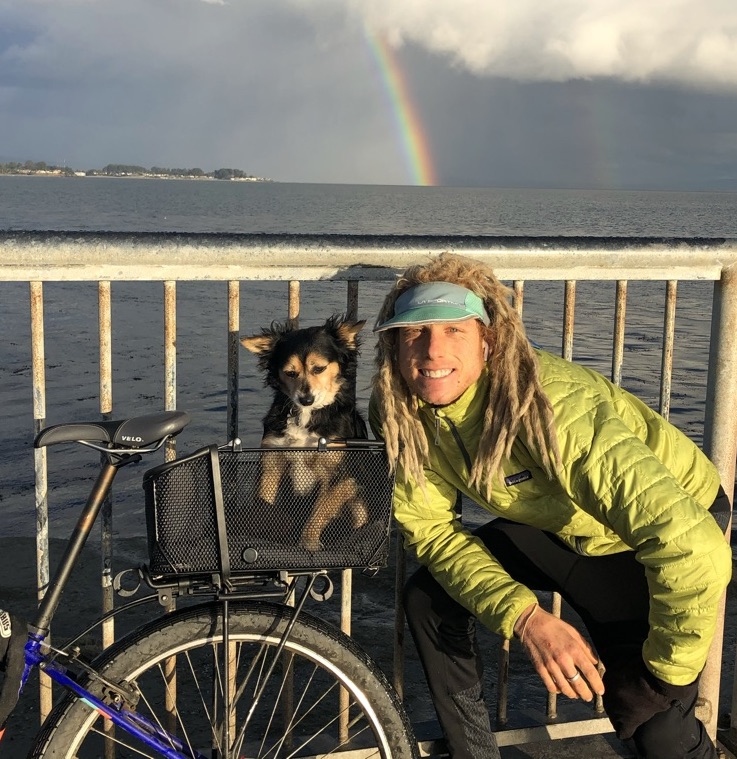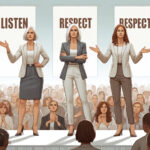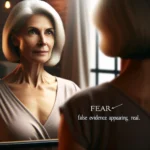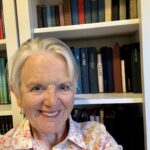Autism and eating disorders: a journey of acceptance and awareness

Autism and eating disorders: a journey of acceptance and awareness
Today is what I’ve come to call a disorder day—an unpleasant, often unpredictable, pill-popping, anxiety-ridden, hold fast to whatever sane or stable thing that you can, just want to get through it kinda day. For anyone immune to these dis-orderly durations of agitation and agony—congrats, you are living a great life. As for the rest of us, for whom these perilous 24-hour periods of pain and panic are a part of existence, I offer assurance that you are not alone.
Regardless of who you are, or what incited the day’s insanity, one truth is universal. Disorder days suck. However, at the ripe old age of 38—following 20+ hours of intense psychiatric interrogations, a near-deadly eating disorder relapse, a few rounds of residential treatment and two decades of self-deprecating internal dialogue—something strange happened. My disordered days underwent a grammatically subtle, yet psychiatrically significant, two-syllable shift. Suddenly, I was no longer disordered. I was disabled:
—————————————————————————————————————————
I must say, Ryan, you present one of the more interesting cases of autism I’ve ever studied.”
“Autism?!” I parroted the passive diagnosis back to my evaluator in the form of a question. Did he just call me autistic? I thought, as I looked towards, but notably not into, his wrinkle-lined eyes. Rarely did I look into anyone’s eyes, the emotions that filled them are too intense for that. Instead, I’ve learned to look at the bridge of my conversational partner’s nose—their metaphysical third eye. A fitting response for someone who feels as though they are trapped in a different dimension than the other earth-bound beings whom they are interacting with. I also tend to tack on my trademark turquoise-tinted sunglasses. Whereas a fashion accessory to most, these magical lenses act as an essential defence mechanism to dim the bright sights, loud sounds, and overbearing personalities of a world that I seem especially sensitive too.
“Yes, autistic. And the professional and personal life that you’ve created to allow for your ritualistic behaviours, coupled with your ability to mask your anxieties, forgo your feelings, and play the part of a charismatic public figure through compulsive exercise and eating practices is pretty extraordinary.” He paused. “Unfortunately, extraordinary is also isolating, exhaustive and, as is the case with eating disorders, deadly.”
Rewind:
From as early as I can remember, I’ve always had a peculiar relationship with food and movement. As a child, I’d ritualistically separate my meals via their temperature, taste and texture, then consume them in abnormal quantities at specific times during the day. As for exercise? Somehow, early in life, I figured out that physical exhaustion provided a quick fix for emotional uncertainty and anxiety, far before I ever understood the terms emotionor anxiety.
Thus, while most kids were playing video games and watching cartoons, I could be found running laps around the yard until my legs went numb— content with the company of my own shadow—because the forced-fatigue freed me from my feelings. This quirkiness was considered cute and harmless as a kid, but as my eating and exercise idiosyncrasies evolved, that quirky-cuteness transitioned into a dangerous eating disorder. As for the road of recovery and relapse to follow? Whereas it has been intense and exhaustive, my hope is that it will prove equally insightful and instructive for others in reflection. So here goes:
After a high school senior year of self-starvation landed me in an in-patient eating disorder center, I managed to regain my footing in college. Quite literally, as my inclination towards the repetitious movement of running paved the way for a successful NCAA Cross Country career, a stent on the professional marathon circuit, and a few years as an elite Ironman triathlete.
As for the food side of things?
To this day I still struggle to dine publicly, or in accordance with the social norm; however, with the help of a nutritionist, I figured out how to properly fuel my body via my unique consumption habits.
Finally, in regard to the social side of life, my undergraduate studies in English Education, coupled with dual graduate degrees in Divinity and Communications, taught me how to script my speech and express empathy—an ability that the neuro-typical world all-too-often deems their neuro-diverse neighbors devoid of. In other words, I became a master in the art of masking, and I was able to maintain a moderately healthy life balance for over a decade. Needless-to-say, the exhaustion associated with maintaining an alternative identity eventually took its toll, and my body and psyche couldn’t withstand the beating.
Thus, upon retiring from marathon running, I mustered up the energy to crawl my way from Kentucky to surf-city, Santa Cruz, California, in an attempt to flee from a lifestyle that I could no longer live up to. Unfortunately, what I came to find was that no matter how fast or far one might run, crawl or creep, it is impossible to evade an eating disorder by fleeing from it. You must face it head on. I was forced to do just that when the added anxiety of the COVID pandemic triggered a full-blown relapse that landed me in an ICU bed. You can dive into the details of my disordered downfall and the climb back to life thereafter in my book, From Emaciated to Emancipated, but the more pertinent question in regard to this writing is this:
Why am I writing this article amidst one of my disorder days?
Because the road that I have traveled in regard to my eating disorder and recent ASD/ADHD diagnosis didn’t have to be nearly so rocky, and the prospect of paving a smoother path for others puts purpose to the pain!
Over the past decade, eating disorder and Autism diagnosis’ have each experienced an exponential rise; though, the overlap between the two is often overlooked. My eating disorder was always less about numbers and looks, but more so based on the sensation of starvation and satiation, the comfort found in ritualistic eating and the difficulty I have in identifying hunger cues and signals of physical fatigue. What’s more, with a proper understanding and support structure, being different in terms of one’s eating habits does always mean disordered.
For most my life, my behavioral patterns around food and exercise were seen as evidence of an ED and OCD, and were treated with exposure therapy and forced re-feeding. However, whereas an anorexic compulsion exasperates anxiety, an autistic ritual alleviates it. And you cannot expose away Autism! In fact, exposure therapy and forced feeding in terms of autistic-anorexia can cause long term trauma and further inhibit one’s ability to fuel a healthy and happy life.
I’d like to reiterate that simple adjective, happy. Like far too many mis-diagnosed Autists, I spent most of my life made to think that I was disordered. Thus, in response to this recent shift in self-identity, I did what any 38-year-old child would do…I called my mom!
“He diagnosed me autistic!” I exclaimed, while still in shock.
“Yeah…you’ve always been a bit unique. But you were happy! Why would I have had you diagnosed as disabled or disordered when you were so contently and creatively you?
She was right. It wasn’t until the world told me that I was wrong, broken or disordered, that I truly started to struggle, and the internal battle that ensued thereafter took the form of restriction, isolation and anxiety. Happiness is rooted in self-acceptance, and though ditching the self-deprecating label of disordered did not change my identity, it has set me on a journey to accept it.
Is it going to be an easy journey moving forward?
Moving forward will not be easy. Not in the slightest. I saw my anorexia as a phase—something I’d outgrow with age and therapy; however, you don’t outgrow autism. Instead, my work lies in exploring and embracing my gifts in a balanced way.
Was the diagnostic process simple?
Absolutely not! Adult Autism evaluations are absurdly hard to attain—and finding support thereafter has proven to be equally challenging. But times are changing!
Finally, am I glad I pursued this diagnosis?
Incredibly! The treatment protocol from medication, to mediation, to meal formation is very different for Autism as opposed to traditional Anorexia; however, I finally feel as though I am on the right track to reclaiming my health, life and laugh!





